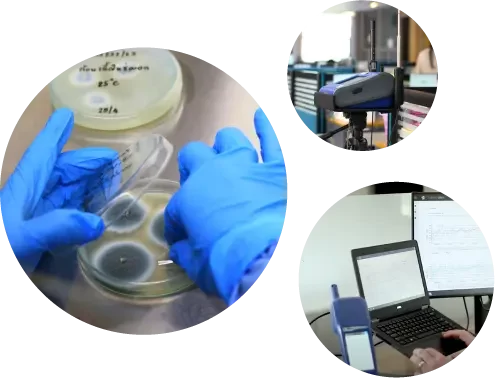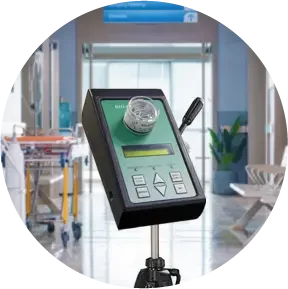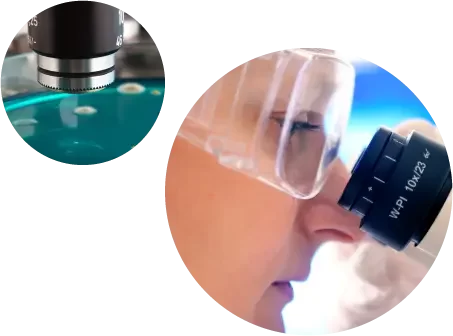IAQ TESTING
Ensuring Safe, Clean Air for a Healthier Indoor Environment
Indoor Air Quality (IAQ) testing provides essential, recordable data to monitor workplace environments, ensuring compliance with Australia's Workplace Health and Safety Acts.

Indoor Air Quality (IAQ) Testing and Air Monitoring
By maintaining a history of air quality, potential issues or complaints can be addressed quickly and fairly, promoting a safe and healthy work environment.
Testing is conducted using specialist methods including:
- Direct measurement with direct reading instruments and continuous monitoring.
- Active sampling followed by detailed laboratory analysis.
- Passive sampling complemented by thorough laboratory analysis.
At Clean-Air, we specialise in professional indoor air quality testing, serving Brisbane, QLD, and NSW. Our team uses NATA-calibrated equipment to ensure accurate testing, adhering to WorkSafe Australia’s Workplace Exposure Standards for Airborne Contaminants. We also align our services with leading industry standards, including the WELL Building Standard, WELL Performance Rating, Green Building Council of Australia's Green Star Rating, and the NABERS Indoor Environment Rating.
Contact us today to schedule a consultation and improve the air quality in your building.
METHODOLOGY
Air Sampling, Surface, Biological, and Active Monitoring

Indoor air quality (IAQ) testing methods vary depending on the contaminants being measured. Here are some common methods used for assessing indoor air quality:
Air Sampling
- Carbon Dioxide (CO₂): Non-dispersive infrared (NDIR) sensors measure CO₂ levels, which are often used as an indicator of ventilation efficiency.
- Carbon Monoxide (CO): Electrochemical sensors can detect low levels of CO, a hazardous gas often released by combustion appliances.
- Volatile Organic Compounds (VOCs): Gas chromatography or a portable photoionisation detector (PID) can be used to measure VOC levels in indoor air.
- Particulate Matter (PM): Laser particle counters or gravimetric sampling devices are used to detect the concentration of PM2.5 and PM10 in the air.
Surface Sampling
- Mould and Fungi: Surface swabs or tape lift samples can be taken from HVAC ducts, walls, or surfaces to identify the presence of mould or fungal growth.
- Dust Sampling: Collection of settled dust for allergen or contaminant analysis can provide insight into the long-term air quality and pollutant sources.
Active Monitoring
- Continuous IAQ Monitors: These can measure real-time levels of several pollutants, including VOCs, CO₂, humidity, temperature, and particulate matter. These devices are used in offices or homes for ongoing IAQ assessments.
- Air Quality Sensors: These small, portable devices can measure multiple air quality factors (e.g., VOCs, CO₂, temperature, humidity) and provide data for trend analysis.
Biological Contaminants Testing
- Bacteria and Viruses: Air or surface sampling can be performed to detect microbial contaminants. Polymerase Chain Reaction (PCR) and culture methods are used to identify specific microorganisms.

Swab
Sampling

Bio-tape
Lift

Cassette
Cell Capture

Active Air
Monitoring

NATA Approved Labs
Our environmental professionals have over 30 years of experience in testing Indoor Air Quality and can prepare you an expert scientific report. Clean-Air uses high-quality NATA (National Association of Testing Authorities Australia) calibrated equipment and works exclusively with NATA approved professional laboratories.
Start the conversation,
talk to our experts now
For Indoor Air Quality Testing services, talk with our Clean-Air® Experts. Call our office on 07 3274 2833 or email sales@cleanairaust.com.au for assistance.
Should we call you? Fill in the form to arrange a call back.
